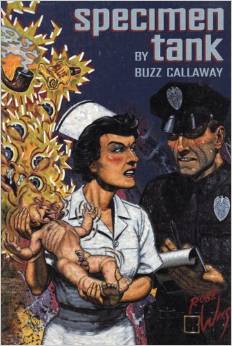WATER FRONTIER
Commerce and the Chinese in the Lower Mekong Region, 1750-1880
EDITED BY NOLA COOKE AND LI TANA
This book of essays continues the pioneering work of economic history begun by Li Tana in Nguyen Cochinchina, which focused on the central region of Vietnam in 16th and 17th centuries. As with any book of essays there is a mix of abilities and concerns but the era and region are so little known, and the thesis so provocative, that every one of them is essential in some way. The thesis is that in this period there was a thriving culture that stretched from modern day Saigon to Singapore, rooted in both local and long distant trade. This culture was multi-ethnic and multi-linguistic, and under the control of no single state actor. It could appear as an interregnum, between a region dominated by a few trading states and by large, powerful inland empires, and an era of colonial control. It is an era of transition, but also a tantalizing glimpse of what the global market economy looked like in the early modern era. It also marks a transition in scholarship, away from nationalist histories, fulfilling patriotic wishes, (and largely countering colonialist histories), and toward a regional studies model rooted in economics, linguistics and culture. It is a brief period where a vacuum in power is filled by opportunists, exiles, freebooters, pirates, and itinerate traders. And it is the details that are so fascinating. The Qing court in China relaxed its ban on foreign trade, but continued to restrict the size of junks that could be built. So Chinese traders sailed to other ports and rebuilt their junks or transferred cargo to larger ships built in the Mekong delta and elsewhere. Europeans, Chams, Khmer, Malays, Thais and Vietnamese jostled and traded along this stretch of coastline. Much of it had not been under state control ever, though the ruins of the earliest trading city in the region, Oc Eo, lie slightly west of the delta and north of the peninsula. It is a swampy region, with settlements on remote and isolated lumps of land. Rice, copper, silver, sugar, tin and forest products filled the holds of the ships. The communities were polyglot. There was, on the Ca Mau peninsula, an exile Chinese community with a king. As Anthony Reid makes clear, the Chinese presence throughout the region was transformative, especially in Thailand. But Thai and Vietnamese political fortunes are also key to both the thriving of this region and its demise.
Vietnam was a divided and expanding polity. Nominally ruled by the Le dynasty, in the traditional capital of Thanh Long, near modern day Hanoi, it was in fact dominated in the north by the Trinh, in the center by Nguyen, and in the far north by the Mac. There were also Chinese trading and mining communities, some so well established that they had court recognition. The Cham, defeated and driven south for centuries, were still a presence, as were Khmer in the southern delta region, the Lao, and the many mountain people located between Cambodia, Laos and Vietnam. (Of course, there was no nation of Laos, but Lao principalities, and Cambodia was in fragments). In Thailand, the Burmese sacked the capital of Ayutthaya in 1767, and what emerged from the ashes was Bangkok, which would become the most powerful capital in the region, under King Taksin (1767-1782), and then the Chakri dynasty, the Sino-Thai family who still reign today. By the late 1770s Vietnam was embroiled in civil war, begun by the Tay Son brothers, who defeated the Nguyen and Trinh but were ultimately unable to rule the territory. In the midst of civil wars and revolutions in the region’s capitals, trade thrived.
The essays in this book are rich in detail. Anthony Reid supplies an overview of the Chinese role. There are essays on the pioneers who moved into frontier areas to farm, mine, fish and trade, on official policies toward these communities, on shipbuilding and other industries. Li and the other authors often focus on the complex linguistic realities and how dominant languages and court histories can create an illusion of nationalist unity where none exists yet. The whole question of nationalism is a vexed one. This is the era of rising nationalisms, and strong arguments can be made that the Vietnamese in particular had a powerful sense of ethnic, linguistic and national unity. Yet it existed in a context that is far from simple, linear or ideal. It would not be until the 19th century that the country was unified with its modern borders, and that unity was short lived as the French conquered Vietnam a mere 50 years later. Vietnamese identity was as much a northern court ideal as anything else, and the farther from the northern capital the Vietnamese moved, the more like their neighbors they became.
Carl A. Trocki’s final essay in the volume concerns the attempt of Chinese merchants who controlled the opium trade to unify and create a monopoly. One amazing fact mentioned in the essay was the use of trademarks, or logos, for opium packages. People looked for brands of opium, and brand names apparently have a long history in China, as Trocki cites a 1989 article by Gary Hamilton and Chi-kong Lai, with the stunning title, “Consumerism without Capitalism: Consumption and Brand Names in Late Imperial China†(in The Social Economy of Consumption, ed. Henry J. Rutz and Benjamin S. Orlove, 1989).
I am now reading a history of the Tay Son rebellion by George Dutton. This is the only single volume history of the rebellion written in English, yet it is one of the pivotal events in Vietnamese history, and given the importance of the region to world history and culture, more should be written about it. It fills in much of the geopolitical context for Water Frontier. Li and Cooke, along with Anthony Reid, Viktor Lieberman, Dutton and others are creating the scholarship and doing the work that I for one literally yearned for when I first started to research the history of Southeast Asia. A spate of recent publications on Champa, medieval Vietnam and especially Keith Taylor’s single volume history of Vietnam give me hope that a person in the future will be able to read 3 or 4 good books in English and thereby learn something of this vital place and its many people.  Â



